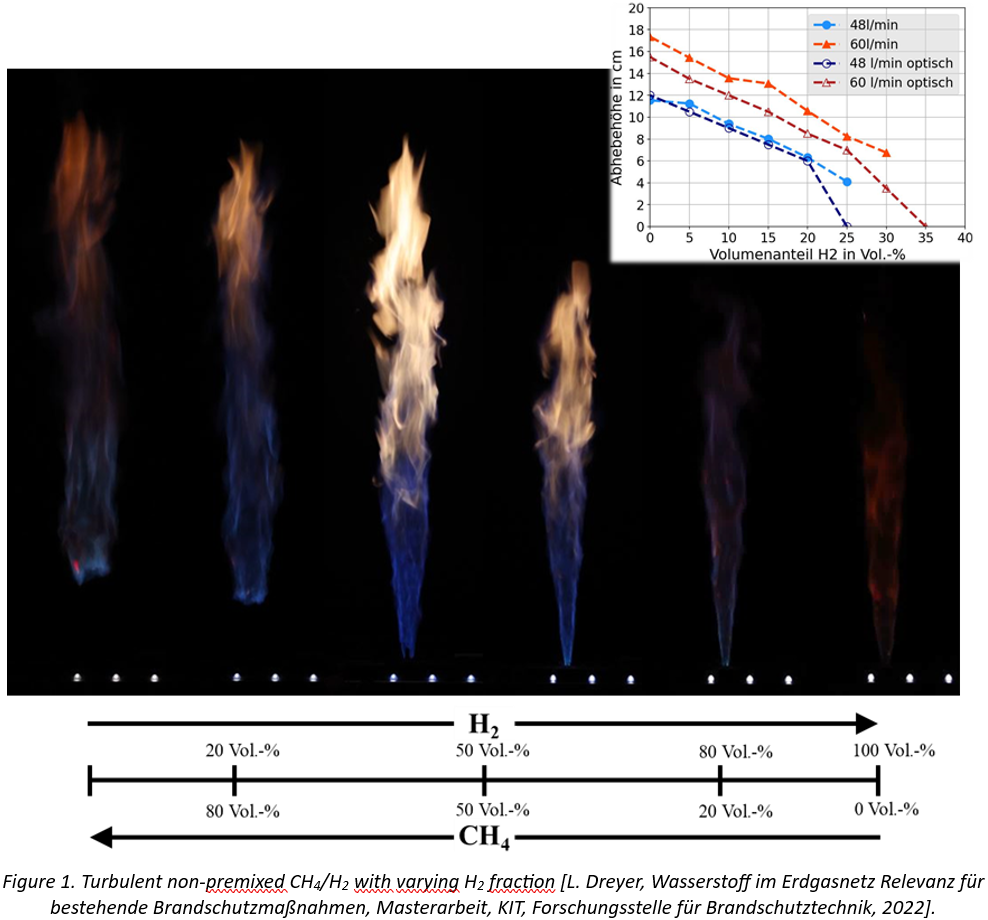Soot formation in non-premixed methane-hydrogen flames
- Workgroup:Combustion Technology
- Type:Ba/Ma
- Date:immediately
- Supervisor:
- Background knowlegde:
Students of chemical engineering/process engineering (or similar) who enjoy experimental work and have a preference for innovative measurement technology. Knowledge of data analysis can make it easier to get started, but is not essential.
-
Location: CS
Motivation:
The use of hydrogen plays a key role in achieving the decarbonisation of the energy market. The addition of hydrogen to natural gas enables the use of existing infrastructure for transport and utilisation. However, the addition of hydrogen to methane leads to a change in flame characteristics such as soot formation, which is investigated in this thesis.

Tasks:
Within the scope of this work, non-premixed methane flames with varying hydrogen addition are to be investigated with the aim of determining the soot volume fraction. The following subtasks are to be worked on:
- Determination of suitable operating points that enable the operation of laminar, anchored turbulent and turbulent lifted flames
- Flame visualisation and determination of flame lengths and lift-off heights
- Investigation of the mechanism of flame anchoring and the hysteresis effect occurring in lifted flames
- Quantification of the influence of hydrogen on soot formation using suitable optical measurement techniques
- Compilation and analysis of relevant literature sources that deal with the topics mentioned for non-premixed CH4/H2 flames
Learning Outcomes:
- Design of operating conditions for technical systems
- Setup and application of optical measurement methods
- Evaluation, presentation, interpretation and assessment of test results
- Writing and defending a scientific paper
Responsible:

